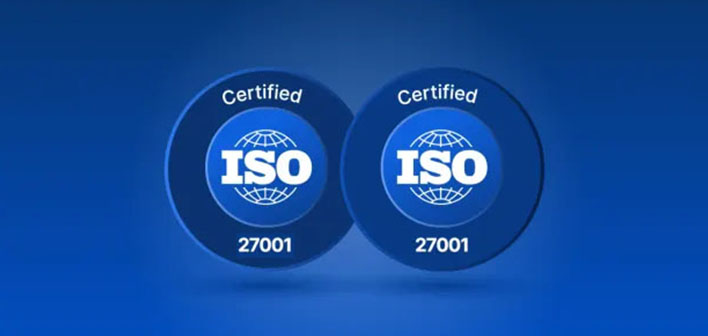ISO 27001:2022 Annex A - List of 93 Requirements
A.5 Operational Controls
5.1 Policies for Information Security
5.2 Information Security Roles & Responsibilities
5.3 Segregation of Duties
5.4 Management Responsibilities
5.5 Contact with Authorities
5.6 Contact with Special Interest Groups
5.7 Threat Intelligence
5.8 Information Security in Project Management
A.6 People Controls
6.1 Screening
6.2 Terms & Conditions of Employment
6.3 Information Security Awareness, Education & Training
6.4 Disciplinary Process
6.5 Responsibilities after Termination or Change of Employment
A.7 Physical Controls
7.1 Physical Security Perimeter
7.2 Physical Entry Controls
7.3 Securing Offices, Rooms, and Facilities
7.4 Protecting Against Physical & Environmental Threats
7.5 Working in Secure Areas
7.6 Equipment Security
7.7 Secure Disposal or Reuse of Equipment
A.8 Technological Controls
8.1 User Endpoint Protection
8.2 Privileged Access Management
8.3 Information Access Restriction
8.4 Access to Source Code
8.5 Secure Authentication
8.6 Capacity Management
8.7 Protection Against Malware
8.8 Management of Technical Vulnerabilities
8.9 Configuration Management
8.10 Change Management
8.11 Data Masking
8.12 Data Leakage Prevention
8.13 Monitoring Activities
8.14 Protection of Logs
8.15 Clock Synchronization
8.16 Application Security Requirements
8.17 Secure Development
8.18 Secure System Architecture
8.19 Secure Coding
8.20 Security Testing in Development & Acceptance
8.21 Outsourced Development Security
8.22 System Acceptance Testing
8.23 Information Deletion
8.24 Data Masking
8.25 Data Leakage Prevention
8.26 Monitoring & Logging
8.27 Security of Network Services
8.28 Secure Exchange of Information
8.29 Secure Communication
8.30 Security of Transferred Data
8.31 Redundancy of Systems
8.32 Backup & Recovery
8.33 Secure Disposal of Equipment
8.34 Physical Security of Equipment
8.35 Cloud Security
A.9 Organizational Controls
9.1 Business Continuity Planning
9.2 Risk Management
9.3 Compliance with Legal & Regulatory Requirements
9.4 Privacy & Data Protection
9.5 Supplier Relationship Security
9.6 Incident Management & Reporting
9.7 Cybersecurity Monitoring & Detection
9.8 Security Awareness & Training
9.9 Secure Use of Mobile Devices
9.10 Security of Remote Working
9.11 Identity & Access Management
9.12 Secure Configuration & Hardening
9.13 Secure Development Lifecycle
9.14 Penetration Testing & Vulnerability Management
9.15 Encryption & Key Management
9.16 Network Segmentation
9.17 Zero Trust Security Model
This list made by covers all 93 controls categorized under Operational, People, Physical, Technological, and Organizational controls as per ISO 27001:2022 Annex A.
